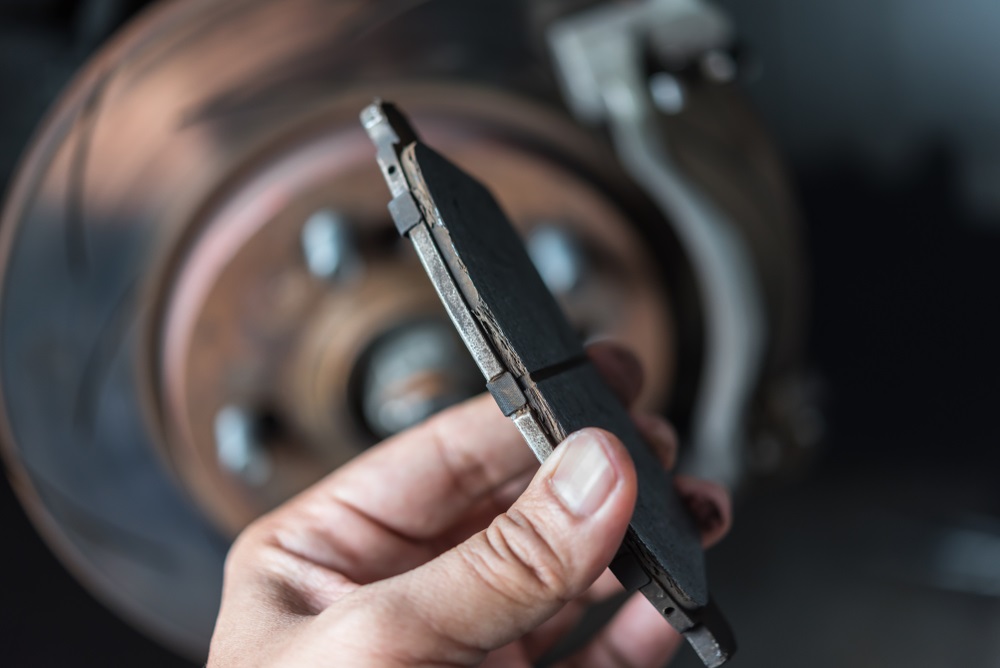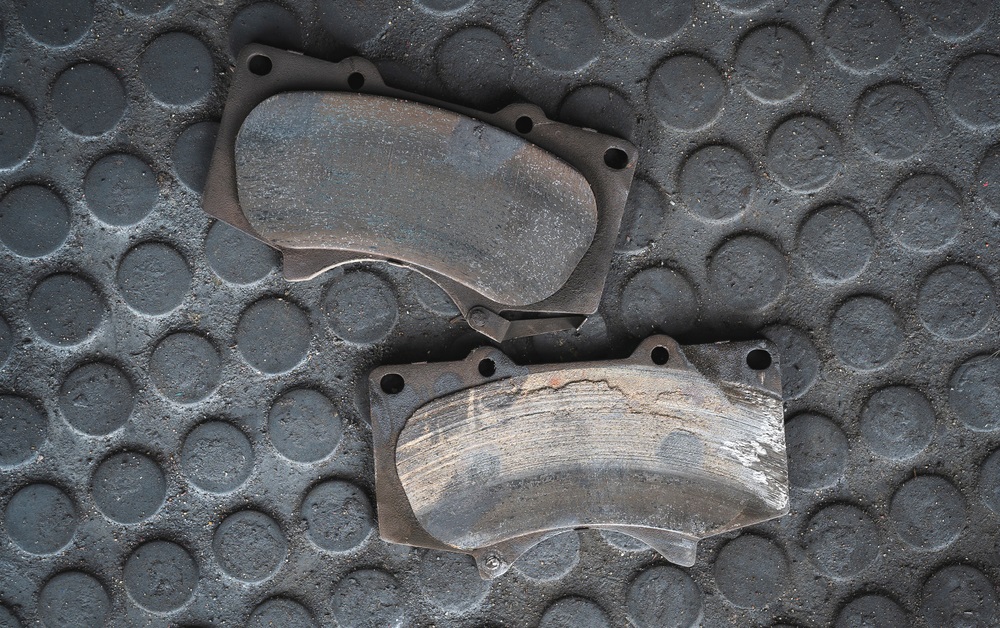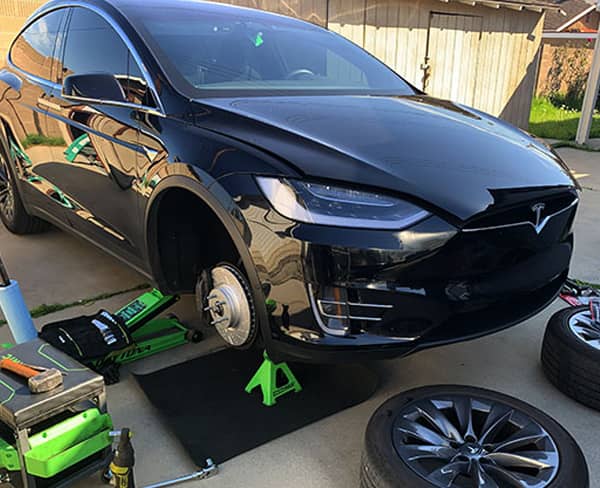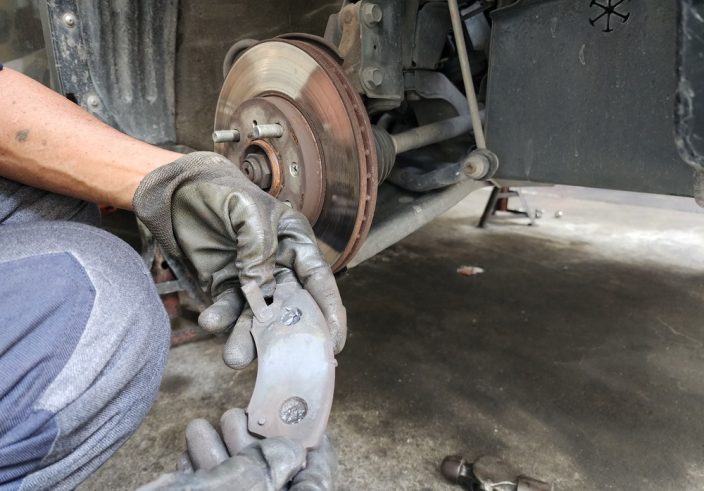Your vehicle’s braking system plays a crucial role in ensuring safety on the road. When your brakes aren’t functioning correctly, you risk excessive stopping distances, reduced control, and potential accidents. One of the lesser-known but dangerous brake issues is brake pad glazing, often referred to as glazed brakes. This condition affects the brake disc, pad surface, and overall brake components, leading to compromised performance.
At EZ Brakes, we specialize in maintaining every aspect of your braking system, from brake calipers to brake lines, ensuring every friction component is in good condition. Read on to learn what glazed brakes are, what causes them, how to recognize the symptoms, and how to fix and prevent this issue effectively.
What Are Glazed Brakes?
Understanding how glazed brakes affect safety and performance
Glazed brakes occur when the surface of the brake pads or the rotor’s surface develops a hard, shiny layer due to excessive heat and friction. This condition reduces the brake pad friction material’s ability to generate the necessary friction to slow or stop your vehicle efficiently. The problem often involves both the pad surface and the brake disc, leading to a significant reduction in braking performance.
The Mechanics of Glazed Brakes
When you press the brake pedal, caliper pistons push the brake pads against the brake disc, creating friction. However, when the brake pad friction material becomes hardened—a condition known as hard glazing—the surface of the pads becomes too smooth, resulting in a noticeable brake shudder and a reduced braking effect.

Causes of Glazed Brakes
Common reasons why brake pad glazing occurs
Brake pad glazing can occur due to a variety of factors, often linked to excessive heat and improper braking techniques. Understanding these causes can help reduce the risk of glazing and maintain your vehicle’s braking efficiency.
1. Excessive Heat Buildup
One of the primary causes of pad glazing is excessive heat generated during braking. When the brakes overheat, the brake friction material can harden, leading to glazing on both the pad surface and the rotor’s surface. This often occurs under conditions such as:
- Heavy Towing or Loads: Additional weight increases the demand on the brakes, leading to higher temperatures.
- Steep Declines: Constant braking while descending hills generates heat quickly.
- High-Speed Braking: Abrupt stops from high speeds can cause rapid heating of the brake components.
2. Improper Braking Habits
Braking habits play a crucial role in preventing glazing. For example:
- Riding the Brakes: Keeping your foot on the brake pedal when not needed generates unnecessary friction and heat.
- Overusing Brakes: In stop-and-go traffic or during long descents, frequent braking without giving the brakes time to cool down can increase the likelihood of glazing.
3. Low-Quality or Incorrect Brake Pads
Using brake pads made of inappropriate brake friction material for your vehicle or low-quality pads can increase the risk of glazing. Different materials, such as organic, semi-metallic, or ceramic pads, react differently to heat. The driver’s knowledge of which pad type is suitable for their driving style can make a significant difference.
4. Hydraulic Failure of the Caliper
The brake caliper plays a crucial role in applying pressure to the brake pads. If there is a hydraulic failure of the caliper, such as a leak in the brake lines or issues with the caliper pistons, the pads might not apply evenly to the brake disc, leading to uneven material transfer and brake pad glazing.
5. Lack of Regular Maintenance
Routine brake inspections can help detect early signs of brake pad glazing. Neglecting regular maintenance, such as checking brake fluid levels, inspecting brake components, and ensuring caliper pistons are functioning correctly, can lead to glazing and other serious brake issues.

Symptoms of Glazed Brakes
How to recognize the signs of brake pad glazing
Early detection of glazed brakes can prevent further damage and maintain your vehicle’s safety. Here are some of the most common symptoms:
1. Reduced Braking Efficiency
The hardened surface of the pads creates less friction with the brake disc, resulting in reduced braking power. You might notice the vehicle taking longer to stop, a phenomenon known as excessive stopping distances.
2. Squeaking or Squealing Noises
A high-pitched noise when applying the brakes can indicate brake pad glazing. The smooth pad surface generates this noise as it slides over the rotor’s surface.
3. Vibrations and Shuddering
A noticeable brake shudder, particularly in the brake pedal or steering wheel, often points to glazed brake components. This occurs when the brake caliper and pad surface fail to create even friction.
4. Visible Signs of Glazing
During a visual inspection, you may see a shiny, glass-like finish on the surface of the brake pads or the rotor’s surface. Discoloration, such as blue or purple hues, indicates overheating and potential hard glazing.
Read more: 7 Things Every Driver Should Know About Brake Repair
Glazed Brakes vs. Normal Brakes
Understanding the Differences and How They Affect Performance
When it comes to vehicle safety and performance, not all brakes are the same. Glazed brakes and normal brakes differ significantly in how they function, their safety implications, and the driving experience they provide. Recognizing these differences is crucial for maintaining your vehicle’s braking efficiency and ensuring safe travels.
Performance and Safety Comparison
Normal Brakes: Normal brakes have a rough and porous surface on both the brake pads and rotors. This texture is essential for creating the friction needed to slow down or stop the vehicle effectively. When you press the brake pedal, the pads clamp onto the rotors, converting kinetic energy into heat and bringing the vehicle to a safe stop.
Glazed Brakes: In contrast, glazed brakes have a smooth, glassy surface that significantly reduces friction. The glazing occurs when the brake pads or rotors overheat, causing the brake material to harden and create a slippery barrier. This loss of friction leads to reduced braking power, longer stopping distances, and an increased risk of brake failure.
Key Differences Between Glazed and Normal Brakes
| Feature | Normal Brakes | Glazed Brakes |
| Surface Texture | Rough and gritty | Smooth and shiny |
| Braking Efficiency | High friction, strong stopping power | Low friction, reduced stopping power |
| Noise Levels | Generally quiet | Often produce squeaking or squealing |
| Safety | Reliable and predictable | Increased risk of brake failure |
| Maintenance Needs | Regular wear and tear | Often requires resurfacing or replacement |
Driving Experience with Glazed vs. Normal Brakes
When driving with normal brakes, you’ll experience a firm and responsive brake pedal with predictable stopping behavior. However, with glazed brakes, the brake pedal may feel spongy, and you might notice a delay in stopping response. This change in performance can be particularly dangerous during emergency braking situations.
At EZ Brakes, we offer comprehensive brake services to ensure your brakes remain in optimal condition. If you suspect your brakes might be glazed, contact us today for a professional inspection and service.
How to Fix Glazed Brakes
Steps to restore brake performance effectively
When it comes to fixing glazed brakes, the approach depends on the severity of the glazing. Here are some effective solutions:
1. Sanding the Brake Pads
If the pad glazing is not severe, sanding the surface of the pads can remove the smooth layer, restoring the friction needed for effective braking.
2. Resurfacing or Replacing Rotors
When the rotor’s surface is glazed, resurfacing or replacing the rotors is necessary to ensure proper friction. This process removes the hardened surface, allowing new brake pads to make solid contact.
3. Replacing Brake Pads
In cases of severe hard glazing, installing new brake pads is the safest solution. At EZ Brakes, we use only high-quality pads with brake friction material that resists glazing.
4. Professional Brake Service
At EZ Brakes, our technicians provide comprehensive brake services, including inspection of the brake caliper, brake lines, and brake fluid levels to ensure all brake components work together smoothly.
Preventing Glazed Brakes
How to reduce the risk of glazing with proactive maintenance
- Avoid Riding the Brakes: Use engine braking or downshift to reduce wear on the pad surface.
- Choose Quality Brake Pads: Opt for pads with high resistance to heat and uneven material transfer.
- Regular Maintenance: Schedule regular brake inspections with EZ Brakes to catch potential issues early.
- Monitor Brake Fluid: Keeping brake fluid at the correct levels helps avoid hydraulic failure of the caliper.

Why Choose EZ Brakes to Fix Your Glazed Brakes?
At EZ Brakes, we offer top-notch brake services designed to keep your vehicle safe and reliable. With our experienced technicians, quality parts, and commitment to customer satisfaction, you can trust us to handle all your brake needs.
FAQ: Common Questions About Glazed Brakes
CAN GLAZED BRAKES CAUSE ACCIDENTS?
Yes, since glazed brakes reduce stopping power, they increase the risk of accidents, especially during sudden stops.
HOW OFTEN SHOULD BRAKES BE CHECKED?
Regular brake inspections are recommended every 12,000 miles or at least once a year, but more frequent checks are advised if you drive in harsh conditions.
Conclusion
Glazed brakes are a serious issue that affects not only the surface of the brake pads but also the entire braking system. By understanding the causes, symptoms, and solutions, you can maintain your vehicle’s safety and performance. At EZ Brakes, our expert services can address glazing and other brake issues, providing you with peace of mind on the road. Contact us today to schedule a brake inspection and keep your vehicle in good condition!



